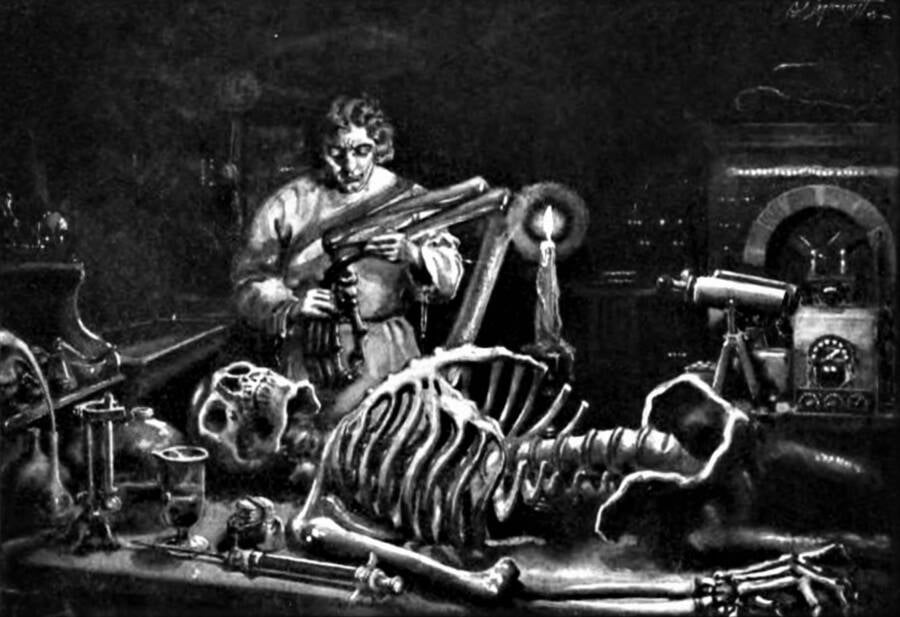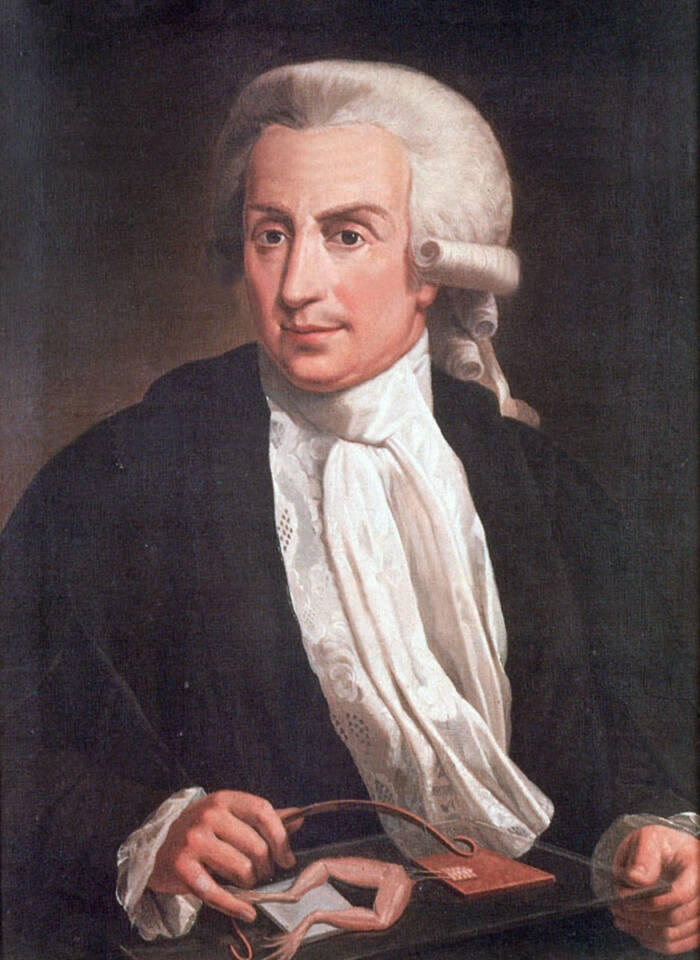In 1818, Mary Shelley published her classic novel about Dr. Frankenstein and his disturbing experiments with reanimation — but the stories of these seven scientists from history prove that reality can sometimes be stranger than fiction.

Wikimedia CommonsDr. Frankenstein at work in his lab, from the seventh page of Mary Shelley’s Frankenstein; or, The Modern Prometheus.
In 1818, a 20-year-old woman named Mary Shelley anonymously published her first novel. Titled Frankenstein; or, The Modern Prometheus, the book told the story of the proverbial mad scientist who reanimated a corpse and created a now-famous monster.
Though Shelley carefully omitted any exposition in her book of how, exactly, Dr. Frankenstein brought his cadaver back to life, modern interpretations of the novel almost always have a lightning bolt zapping the creature into existence. This now-cliché tableau may not be exactly what Shelley had in mind when she wrote the story, but surprisingly, it was not far off from how contemporary scientists had been attempting similar experiments.
For decades before and after the book’s publication, several prominent scientists were putting serious brainpower into the job of reanimating corpses in their own real Frankenstein experiments.
Luigi Galvani, The Italian Biologist Interested In ‘Medical Electricity’

Wikimedia CommonsItalian physicist and biologist Luigi Galvani developed an interest in “medical electricity” and how it could be used on animals.
Bringing dead things to life with the power of electricity was an old idea even when Shelley started writing in 1818. Decades before, in 1780, Italian scientist Luigi Galvani noticed an effect that would set him on the path to performing the sort of grisly experiments that could have inspired Frankenstein.
Galvani was a lecturer at the University of Bologna. Scientists of the late 18th century weren’t necessarily specialists, and so Galvani was interested in everything. He was a chemist, physicist, anatomist, physician, and philosopher — and he seemingly excelled in each field.
In the late 1770s, after nearly 20 years of studying obstetrics, comparative anatomy, and physiology, Galvani turned his attention to frogs’ legs. According to the legend that later developed around his work, Galvani was skinning the severed lower half of a frog when his assistant’s scalpel touched a bronze hook in the animal’s flesh. All at once, the leg twitched as if it were trying to hop away.
The incident gave Galvani an idea — and he started experimenting.
He published his results in 1780. Galvani hypothesized that the muscles of dead frogs contained some vital fluid he called “animal electricity.” This, he argued, was related to — but fundamentally distinct from — the kind of electricity in lightning or the static shock that can come after walking across carpet.
He believed the electrical contact animated whatever residual animal-electric fluid remained in the frogs’ legs. This sparked a respectful argument with Alessandro Volta, who confirmed Galvani’s experimental results but disagreed that there was anything special about animals and their electricity.
A shock was a shock, he argued — and then he invented an electric battery to prove it. By 1782, Volta was shocking all sorts of dead things himself to prove any old electricity could do the trick.
Meanwhile, Galvani’s name was cemented in scientific history as the inspiration for the term “galvanism,” or electricity produced by a chemical action.





